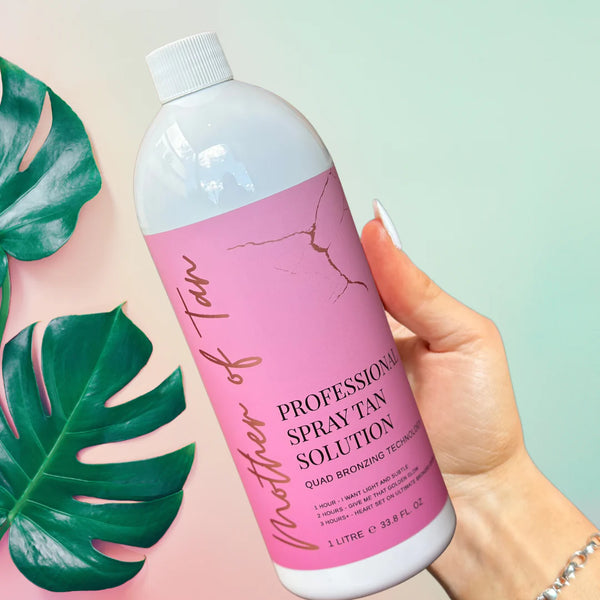Can you put self tanner on your Face?

Can you put self-tanner on your face?
Self-tanning is a great way to achieve an even and natural-looking tan and golden glow without the risks associated with sun exposure. But if you’re considering using a self-tanner on your face, proceeding cautiously is important. Yes, you can use self-tanner on your face, but should you? That depends on your skin type, the ingredients in the product you’re using, and how experienced you are with self-tanning.
To be safe, it is best to choose a or product specifically formulated for use on facial skin. Facial self-tanners tend to be lighter and more hydrating than those intended for use on the body. If you’re using a body tanner, make sure it is suitable for sensitive skin and avoid ingredients like alcohol that can be irritating to delicate facial skin.
It is best to start with a light formula, as this will give more natural-looking results and provide better control over the overall
You have successfully achieved a beachy golden glow on your body through self-tanning, but you may have overlooked one crucial area - your face.
Prepare your skin
To prepare your face for self-tanning, make sure to exfoliate gently a day before tanning. This will help create a smooth base by removing dirt and dead skin cells, especially in dry spots like the cheeks. After that, apply a clean and oil-free moisturiser to keep your skin healthy. Avoid using skincare products with oils before tanning since they may not be absorbed well into the top layer of the skin.
Apply your tan
For achieving a perfect self-tanned face, it is recommended to do it at night and apply self tanner as a part of your night skincare routine. Firstly, cleanse your face and remove all the makeup. Then, lightly moisturise your nose and any other dry spots. It is important to keep your skin clean by using an oil-free cleanser and makeup remover. After that, apply the self-tan. A helpful tip is to apply thener on the exposed areas where sunlight naturally strikes, such as the nose, forehead, and cheeks to help contour a natural look and to your neck and hairline.
What is the best way to apply self-tanner to your face?
When it comes to applying self-tanner, the method varies depending on the product you select both will have the same active ingredient DHA. If you choose to use the same self-tanner for both your body and face, it is recommended to utilise a makeup brush or a Face and Hand Brush. For the Face and Hand Brush, apply the self-tanner to your tanning glove and use it similar to a paint tray to allow you to blend the tan. This will allow you to contour your face. This approach can help you achieve a natural glow with your face tanner alone, ultimately reducing the need for foundation.
How long should I leave fake tan on my face?
To achieve a beautiful glow and tan on your face, it typically takes about 4-8 hours. However, the tends to lose its tan and can fade faster than other parts of the body, so it's recommended to reapply the tan after a few days for optimal results. See below why we think facial tanner is a better alternative.
A facial tanner is a great option for those looking to achieve an even, natural glow without the commitment of long-term fake tanning. Facial tanners are designed specifically for the face and can be applied with precision and accuracy, resulting in a beautiful and realistic colour that looks like you've been spending time in the sun.
Is it safe to put fake tan on your face?
Absolutely! However, it's important to find self-tanners that won't clog pores and trigger breakouts. By selecting the appropriate products and utilising them appropriately, individuals with acne can confidently use
fake tan. Additionally, it's important to patch-test the product before applying it all over the face. This will allow you to assess if the self-tanner is too strong or not suitable for your skin type.
Can I use fake tan as a substitute for foundation?
Yes! Fake tan can be used to add colour and definition to your skin, while also providing a natural and healthy glow. However, it's important to choose the shade and formula for your skin type. Self-tanners come in different shades and concentrations, so it's best to read labels or consult with a professional prior to purchase to ensure you are selecting the right product. When applying fake tan as a foundation substitute, it's important to start by applying a small amount to the back of your hand and blending it before using it on the face.
We still think that a facial tan specific for this area is a far better option to apply to ensure that it is gentle, won't leave you with clogged pores and will definitely be non-comedogenic such as Botanique Facial Glaze.
This can also be applied daily as they are designed to slowly build a natural glow over a few days and will leave you with an even application.
Do you put a self-tanner on your face before moisturiser?
Not necessarily. For best results, it is recommended that you apply your self-tanner after cleansing and toning the skin. Applying moisturiser first can act as a barrier between your skin and the tanning product, which may affect how evenly the product blends in and may not leave you with a flawless finish. If you do need to use moisturiser before applying tanner only use it on dry areas such as your cheeks and nose.
How do you make self-tanner look good on your face?
If you're new to self-tanning your face, it's understandable to feel a bit apprehensive. Remember, it's best to start with a light application and gradually build up to achieve your desired level of colour. Don't be afraid to experiment with contouring techniques to enhance your natural bronze glow.
Benefits of using a specific facial tanner
Face Tanner, Tanning Drops for the face not only provide a radiant glow, but they also contain moisturising properties such as jojoba oil and hyaluronic acid. These are formulated to prevent skin breakouts and are non-comedogenic. Additionally, they can help conceal fine lines and leave the skin looking plump and nourished. When it comes to facial tanners and tanning drops, the DHA content is usually lower compared to body tanners. Allowing you to incorporate them into your regular skincare routine which can help relieve dry skin on your face. This will allow you to create a gradual tan without the risk of going orange overnight. Botanique Facial Glaze has 10+ super ingredients Bamboo Juice, Lichen, Moss and Fern
To achieve a perfect sun-kissed glow, it is crucial to choose the right facial tanner that suits your skin routine and preferences among the numerous options available in the market. With the right product, you can achieve the best results.
How do you apply self-tanner to contour your face?
https://www.motheroftan.com.au/blogs/blog-posts-how-do-you-apply-self-tanner-to-contour-your-face/how-do-you-apply-self-tanner-to-contour-your-face








